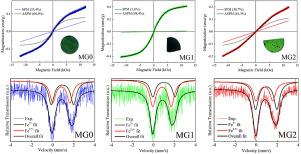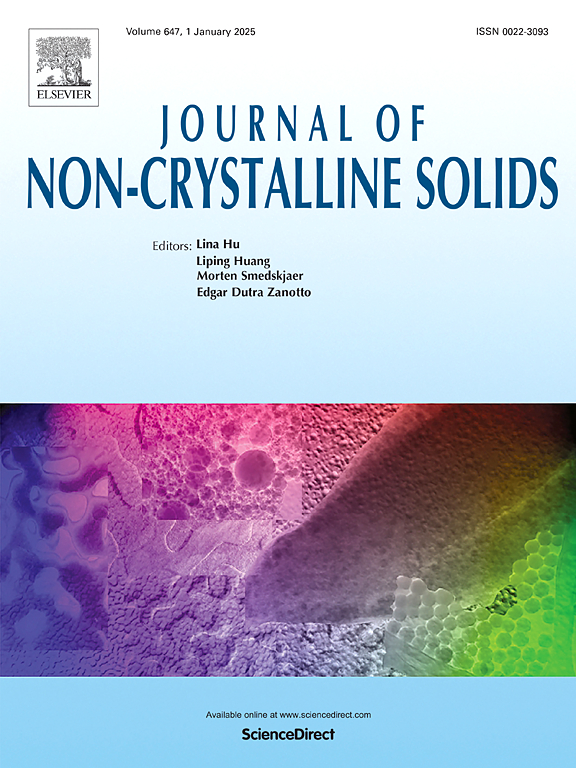Asperomagnetism and speromagnetism in magnetic aluminosilicate glasses
IF 3.2
3区 材料科学
Q1 MATERIALS SCIENCE, CERAMICS
引用次数: 0
Abstract
In this research, we make use of mineral waste composite with elemental composition of Si, Al, Ca, Mg, K and Fe to synthesize magnetic aluminosilicate glasses (MAGlass). The produced MAGlass presented interesting magnetic and optical properties due to the presence of iron with different valence states. The elemental composition was measured by X-ray fluorescence spectroscopy. X-ray diffraction analysis confirmed the glass amorphous nature. Thermal properties such as glass transition temperature and thermal stability were analyzed by differential scanning calorimetry. The nature of the glass chemical bond structure was studied by FT-Raman analysis. UV–Vis spectroscopy studied the transmittance and absorbance in each sample, approaching the main electronic transitions, Racah parameters and gap energy. Mössbauer and magnetization measurements showed different iron valency states and interesting asperomagnetism and speromagnetism behaviors, with variations among the Fe2+ and Fe in the MAGlass samples.

磁性铝硅酸盐玻璃中的超磁性和疏磁性
在这项研究中,我们利用元素组成为 Si、Al、Ca、Mg、K 和 Fe 的矿物废料复合材料合成了磁性铝硅酸盐玻璃(MAGlass)。由于含有不同价态的铁,所制得的磁性铝硅酸盐玻璃具有有趣的磁性和光学特性。元素组成是通过 X 射线荧光光谱测定的。X 射线衍射分析证实了玻璃的无定形性质。差示扫描量热法分析了玻璃转化温度和热稳定性等热特性。通过傅立叶变换拉曼光谱分析研究了玻璃化学键结构的性质。紫外可见光谱法研究了每个样品的透射率和吸光度,接近主要的电子跃迁、拉卡赫参数和间隙能。莫斯鲍尔和磁化测量显示了不同的铁价态以及有趣的超磁和疏磁行为,MAGlass 样品中的 Fe2+ 和 Fe2.5+ 之间存在变化。
本文章由计算机程序翻译,如有差异,请以英文原文为准。
求助全文
约1分钟内获得全文
求助全文
来源期刊

Journal of Non-crystalline Solids
工程技术-材料科学:硅酸盐
CiteScore
6.50
自引率
11.40%
发文量
576
审稿时长
35 days
期刊介绍:
The Journal of Non-Crystalline Solids publishes review articles, research papers, and Letters to the Editor on amorphous and glassy materials, including inorganic, organic, polymeric, hybrid and metallic systems. Papers on partially glassy materials, such as glass-ceramics and glass-matrix composites, and papers involving the liquid state are also included in so far as the properties of the liquid are relevant for the formation of the solid.
In all cases the papers must demonstrate both novelty and importance to the field, by way of significant advances in understanding or application of non-crystalline solids; in the case of Letters, a compelling case must also be made for expedited handling.
 求助内容:
求助内容: 应助结果提醒方式:
应助结果提醒方式:


